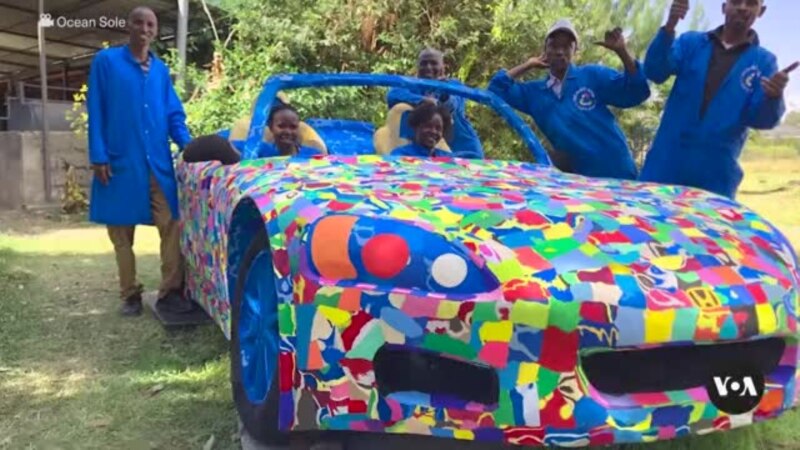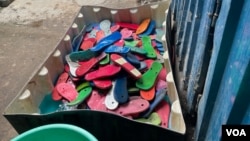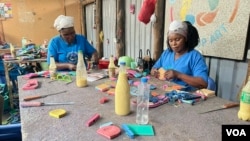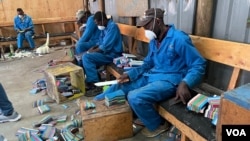This website uses cookies so that we can provide you with the best user experience possible. Cookie information is stored in your browser and performs functions such as recognising you when you return to our website and helping our team to understand which sections of the website you find most interesting and useful.
 Nairobi, Kenya —
Nairobi, Kenya —
Being the preferred choice of footwear for many, flip-flops - typically made of plastic or rubber - break easily and often aren’t disposed of properly. Therefore, millions of them end up in oceans, waterways, dumpsites, and landfills all over the world.
Ocean Sole, a Kenya-based company, has found creative and functional ways to reuse the hundreds of thousands of discarded flip-flops that arrive regularly at their warehouse located in Karen, about 45 minutes from Nairobi’s city center.
Joe Mwakiremba has been working for the company for about 10 years. He says the company was “founded on the premise of cleaning our ocean and waterways [while] at the same time employing lots of artists from high-impact communities in Kenya.”
He told VOA that flip-flops are generally collected from weekly beach cleanups and other places.
At Ocean Sole, they usually weigh the material and pay collectors about 18 cents per kilogram. Then, to prepare them for carving, they are first hand-washed, one flip-flop at a time.
“The next stage for our smaller and medium-size sculptures, we have a die cut machine that would punch out a template of a giraffe, a lion or a rhino. Those templates are joined together with glue and carved out into that respective animal,” he notes.
For life-size pieces, the company reuses an additional material.
“The big piece like this couch I am sitting on, the inside of it is polystyrene. Polystyrene comes from shipping companies; they use it as insulation. When it’s worn out, they toss it away, so we carve out our big-size sculpture like the giraffe behind me using that material and pad it using the flip flops around it,” he expressed.
Using a machine, the pieces are then sanded before being cleaned again and readied for shipment.
In 2023, the company said it recycled 750,000 flip-flops. This year it aims to recycle one million.
Florence Auma is an artist who has been working for the company for 14 years. Auma told VOA she had to learn the art of carving from scratch.
“I came into this company, washing flip-flops. I started with washing, then I started with blocking, then I am the first female carver in this company. Now, I am happy because I have many skills in this company,” she says.
Skills, she says, that have allowed her to be able to carve just about anything — like coasters — and to travel the world to showcase her talent.
Mwakiremba told us one of the largest pieces the company made was a life-size car for a Honda dealership in the United States. They spent three months on the project, using 2,500 flip flops.
Ocean Sole is now collaborating with a design artist from Uganda who now lives in Finland and founded a studio there, in one of their biggest projects to date.
It’s a project they had planned to work on together in 2019 but had to pause due to the COVID-19 pandemic.
Lincoln Kayiwa - who has used material such as ceramic, granite, wood, and glass — has decided to try something new with flip flops.
He recently traveled to Kenya to finalize a furniture project to be launched in April during Milan Design Week — Salone del Mobile — in Italy.
To cook up this kind of project, Kayima told us he wanted to combine different elements, including a unique design concept with a meaningful product combined with his Ugandan and Finnish cultures — and that of Kenyans at Ocean Sole.
“The project itself has 14 pieces; you are just seeing three of them ... of course it’s a win-win situation; the more flip-flops are used, that means the more flip-flops are being taken out of the environment. For me that’s the meaning of sustainability,” the Alvar Aalto University graduate said.



 Africana55 Radio
Africana55 Radio 



